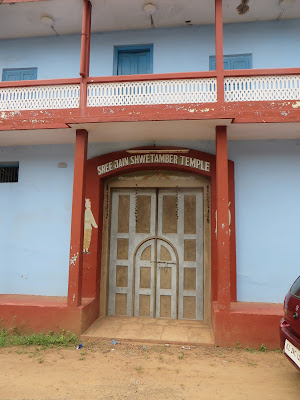As KM mentioned, we did not see any beggars in Kerala. Children would wave to you, not ask for money or try to sell you a pen. They could be seen dressed in their uniforms waiting for the bus. We were told Kerala has the highest literacy and education rate in India.
There are many kinds of Communist parties in Kerala, and I assume in
India. KM found Marxist, Marxist-Leninist, Maoist - we may have missed
some. This is the youth wing of the Marxist one. Then we get to the
social democratic parties. A bit hard to argue when they have the best
literacy and education statistics in the country.
Kerala has just had its state elections. One of the Communist parties won it. These are election posters, Kerala style. Hope it doesn't catch on in Australia - imagine multiple pictures of Turnbull or Shorten.
I looked again at this signboard the first time we saw it. No, it wasn't Cheltenham. Never got to Chellanam though.
Wonder if he will change his sign with the new Google font.
And this one for all Esso ex-employees. You might get a discount.
Despite its advances, there is still poverty in Kerala. Such signs seem incongruous when there are waterways to be cleaned. Such is life.
They are called auto-rickshaws here. This is their rain gear.
India never fails to surprise. At yesterday's lunch we were greeted by the present owner's son, who looked very Indian and greeted us in a very English accent. The UK people in our group recognised it as a London accent. He had indeed lived in London but come home to help his mother run the home-stay. We wondered just what sort of lunch we would get!

















































